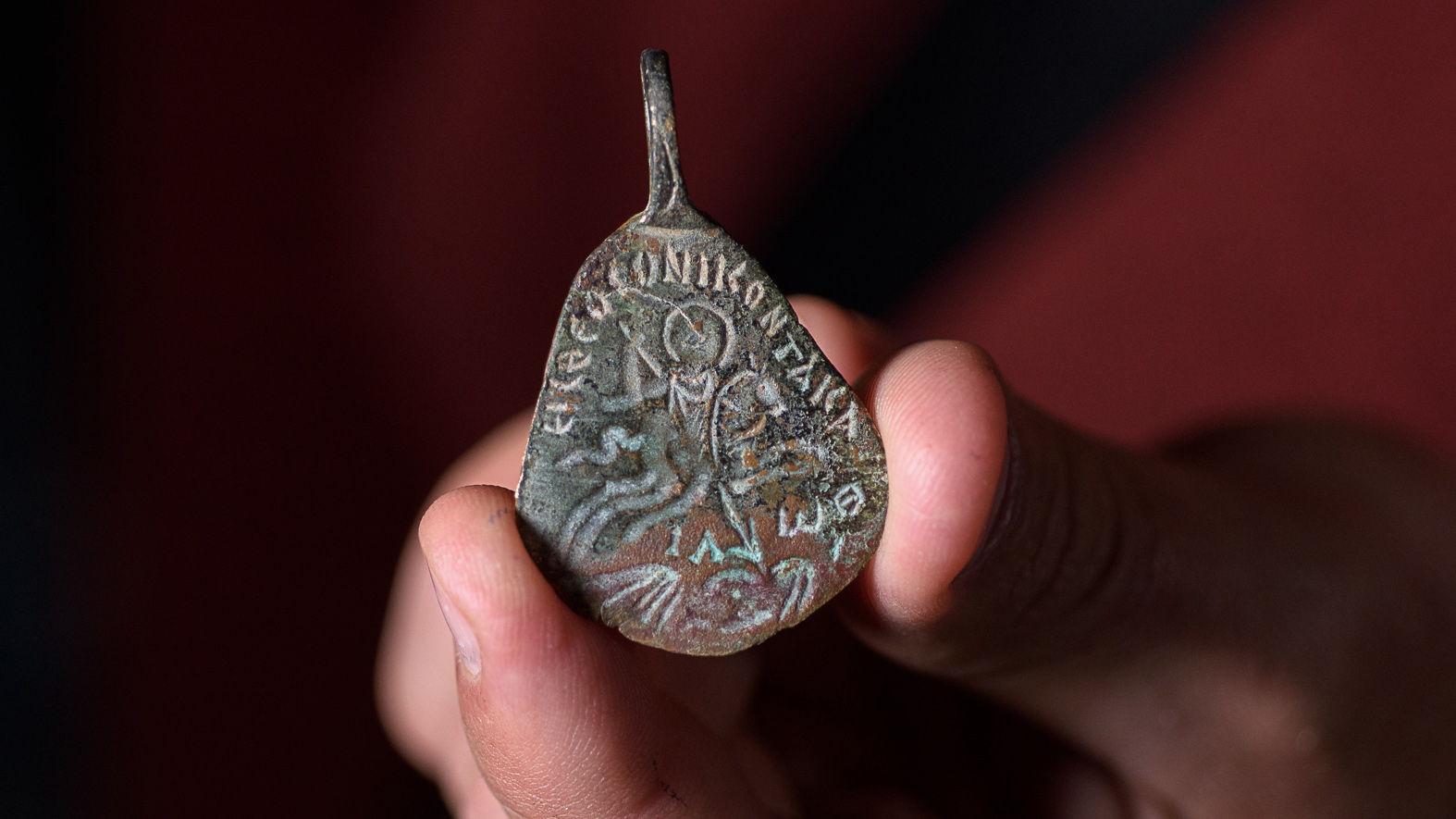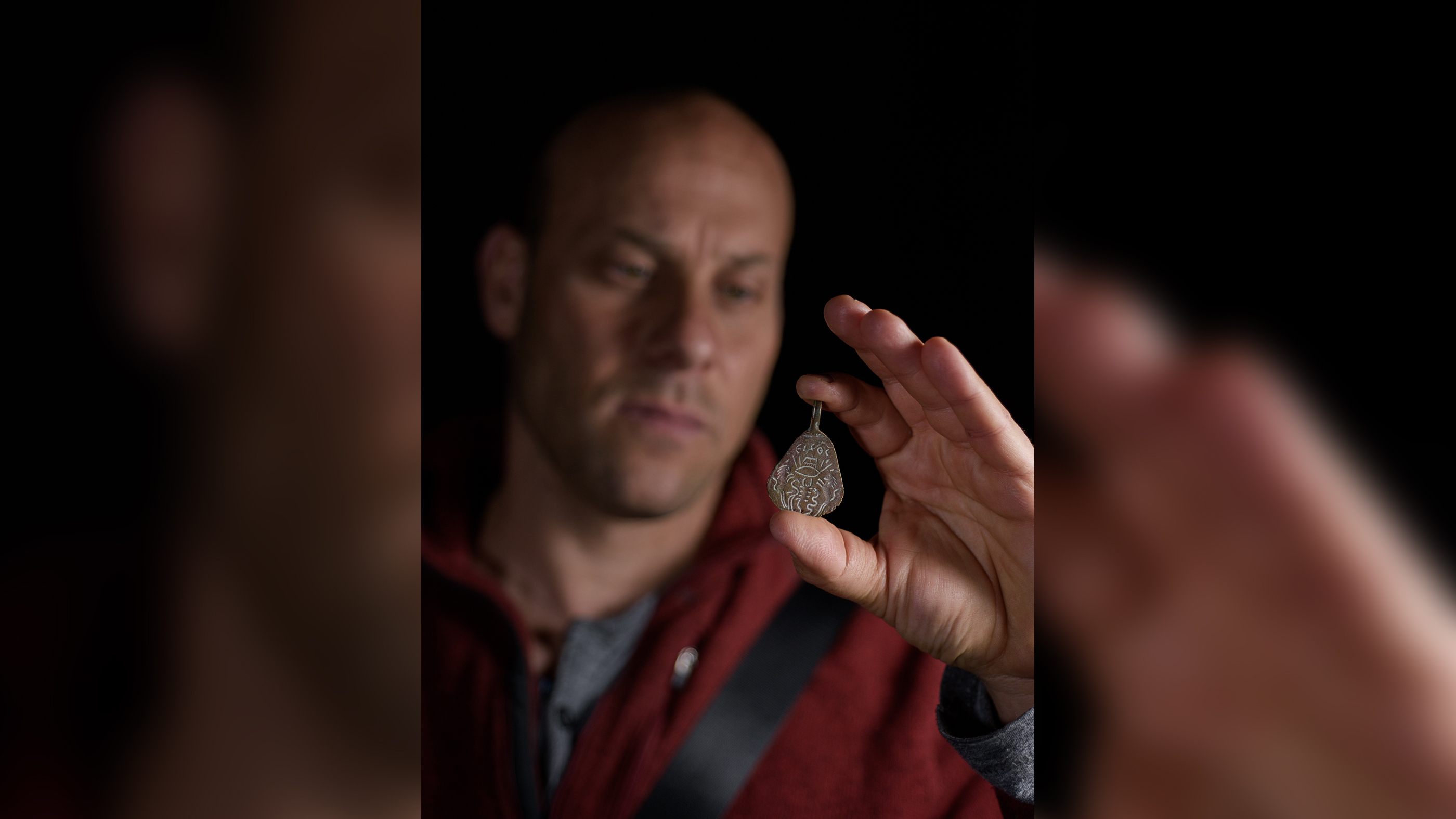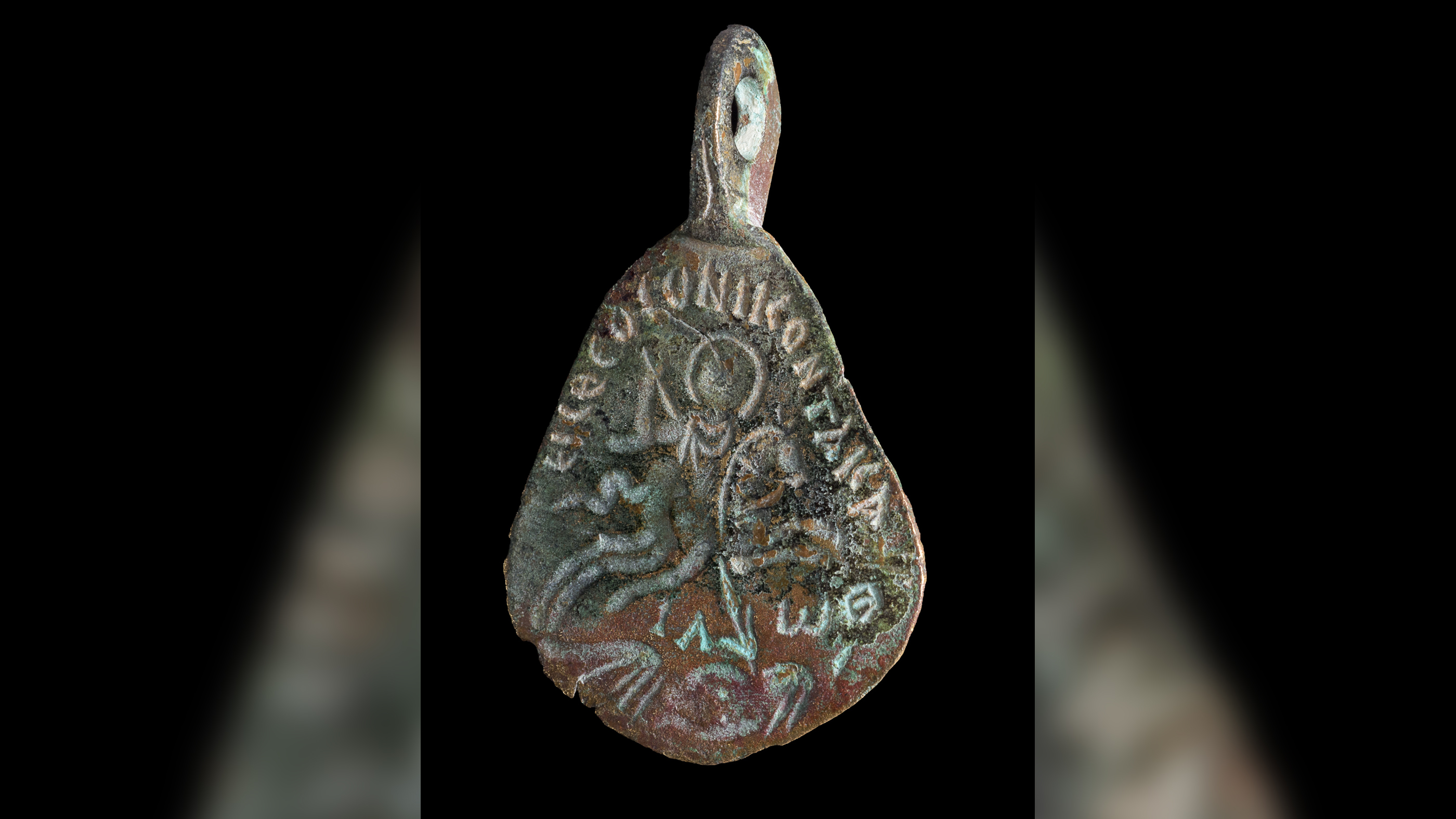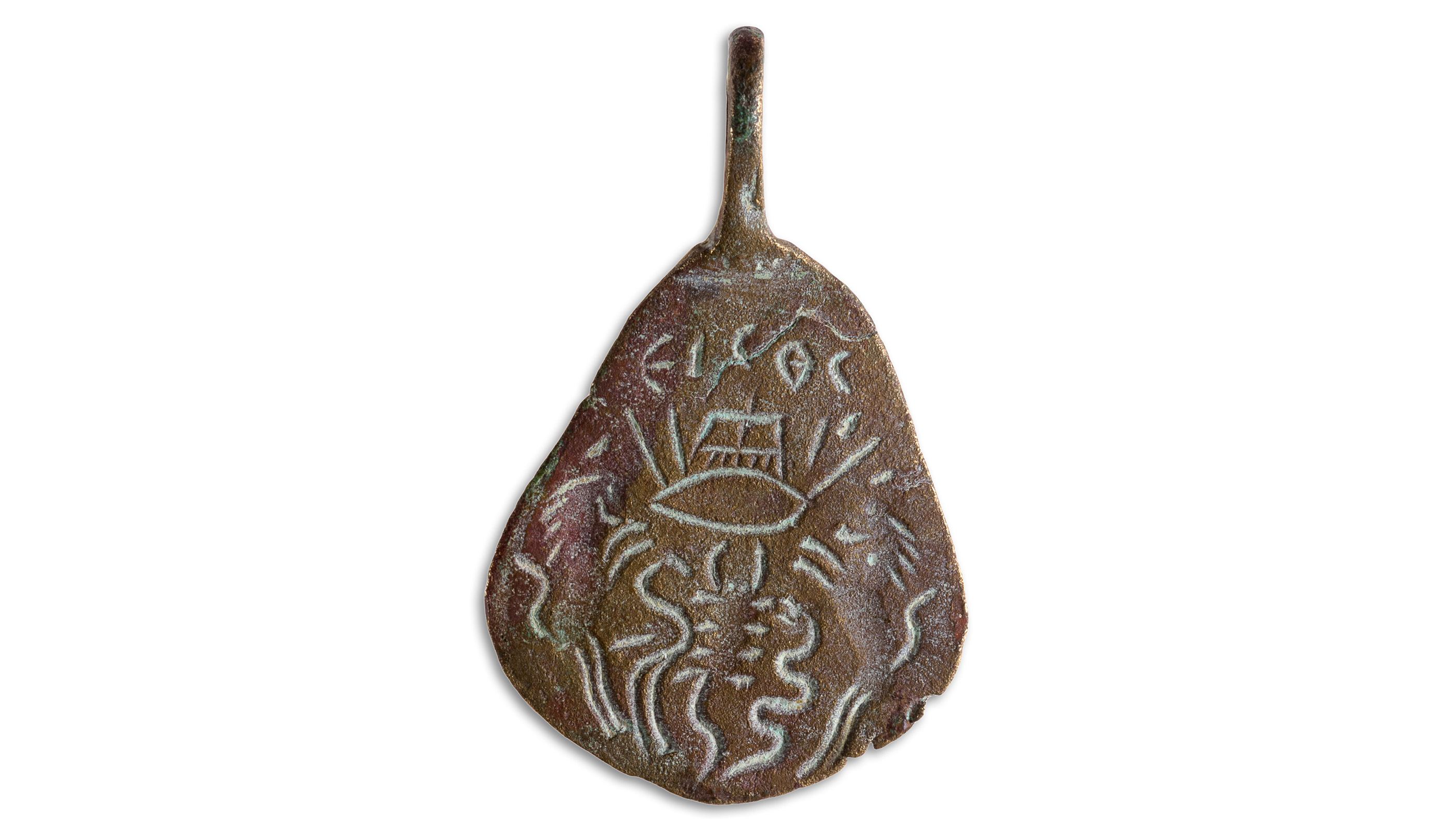Ancient 'magical' amulet used to ward off the 'evil eye' rediscovered after 40 years

A bronze amulet inscribed with the name of God and magical symbols for protection against demons and the curse of the "evil eye" has been turned over to authorities after being unearthed in northern Israel 40 years ago.
The amulet, which would have once been worn on a necklace, is thought to date to about 1,500 years ago during the Byzantine period, according to the Israel Antiquities Authority (IAA) . At that time the region was ruled by the Eastern Roman Empire, which was also known as the Byzantine Empire after Byzantium, the former name of the city it was based in (by then Byzantium had been renamed Constantinople and it is now Istanbul.)
Although the amulet is inscribed with Greek letters, they spell out the Jewish name for God — I A W Θ, a form of the name "Yahweh" in the English alphabet.
Archaeologists found the bronze amulet, which is about 3 inches (8 centimeters) long and about 1.5 inches (4 cm) wide, near the site of an ancient Jewish synagogue at Arbel, just west of the Sea of Galilee. The location and inscriptions suggests the amulet may have been worn by someone who was Jewish, in spite of its religious origins, said Eitan Klein, an archaeologist with the IAA.
Related: 30 of the world's most valuable treasures that are still missing
"Although scholars generally identify the wearers of such amulets as Christians or gnostics, the fact that the amulet was found within a Jewish settlement containing a synagogue in the fifth and sixth centuries CE [A.D.] may indicate that even Jews of the period wore amulets of this type for protection against the evil eye and demons," Klein said in the statement.




Evil eye
This type of amulet was relatively common at the time in the Galilee region and what is now Lebanon; they are sometimes known as a form of the "Seal of Solomon," named after the legendary Israelite king. One side shows a figure of a rider on a galloping horse whose head is encircled with a halo, thrusting a spear downward onto a female figure lying on her back. A Greek inscription engraved above the rider's head reads, "The One God Who Conquers Evil," and the name of God in Greek letters — I A W Θ — is inscribed beneath the horse's legs.
Sign up for the Live Science daily newsletter now
Get the world’s most fascinating discoveries delivered straight to your inbox.
The other side depicts an eye pierced by arrows and a forked object. The eye appears to be threatened by the figures of two lions, a snake, a scorpion and a bird below it, and an abbreviation in Greek letters meaning "One God" is inscribed above it.
The amulet was probably produced in the region to protect against demons and the magical curse known as the evil eye — an old belief held throughout the ancient world at least as far back as the sixth century B.C. According to this belief, some magicians were said to be able to level the curse with a malevolent glance, while the recipients would suffer injury or misfortune.
"The rider is depicted overcoming the evil spirit — in this case, a female identified with the [Greek] mythological figure Gello or Gyllou, who threatens women and children and is associated with the evil eye," Klein said. "The eye on the reverse is identifiable as the evil eye being attacked and vanquished by various means. The amulet was therefore probably used to guard against the evil eye, possibly to protect women and children."
Ancient synagogue
The amulet was found at the site of the ancient Jewish settlement of Arbel around 40 years ago by a founding member of a nearby moshav, a type of cooperative farming community established by Israeli pioneers in the 1920s.
A family member of the finder, now deceased, recently handed over the amulet to the Israel Antiquities Authority, and Klein encouraged people with similar treasures to do the same.
The amulet is thought to date to the end of the Talmudic period in Jewish history, when traditional Jewish theology and laws were formalized in the collection of written works known as the Talmud. Klein said the synagogue at Arbel was often mentioned in historical sources from the Talmudic period; it had a linen-production industry, and many Jewish sages visited or taught there.
Originally published on Live Science.
Tom Metcalfe is a freelance journalist and regular Live Science contributor who is based in London in the United Kingdom. Tom writes mainly about science, space, archaeology, the Earth and the oceans. He has also written for the BBC, NBC News, National Geographic, Scientific American, Air & Space, and many others.









